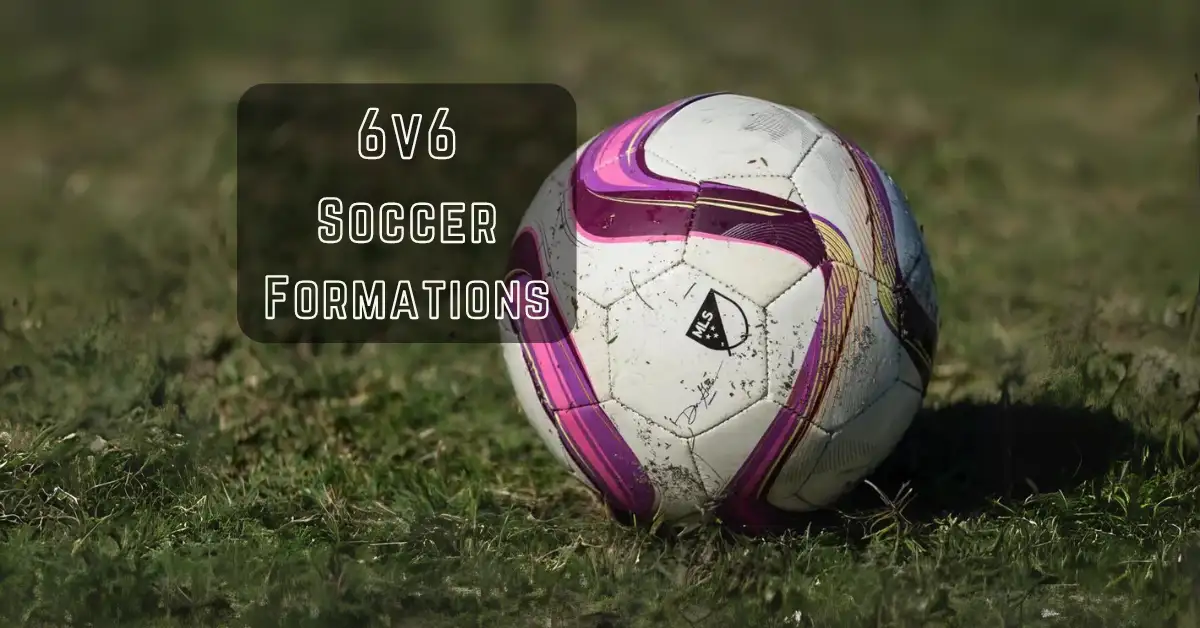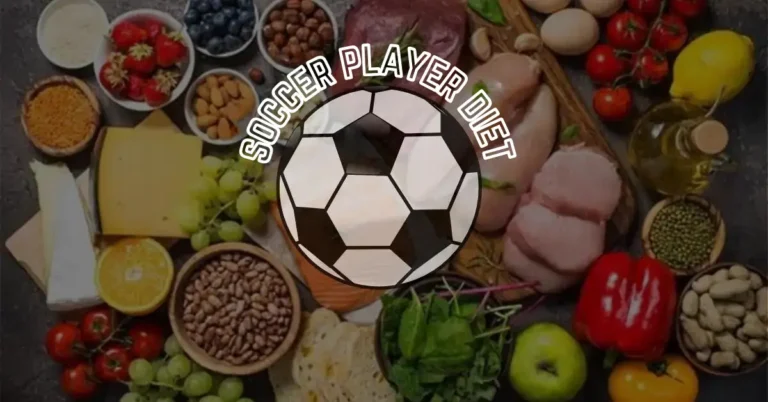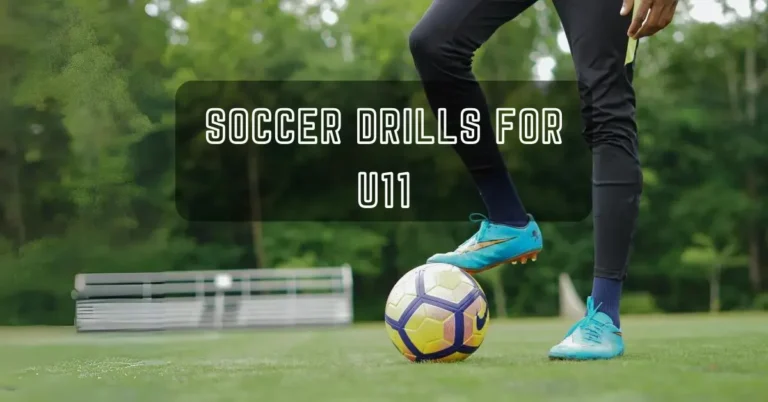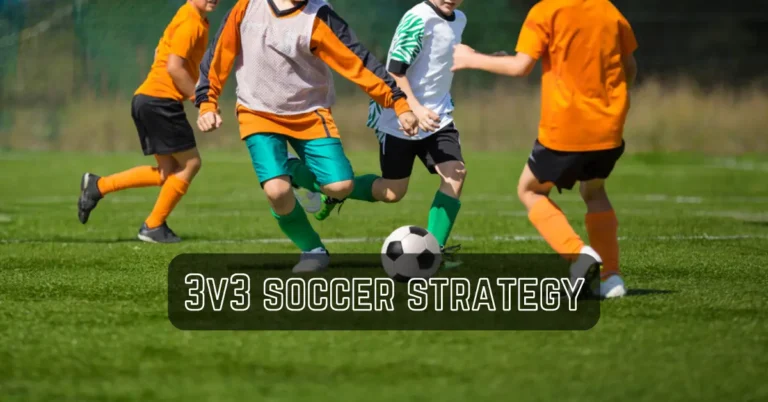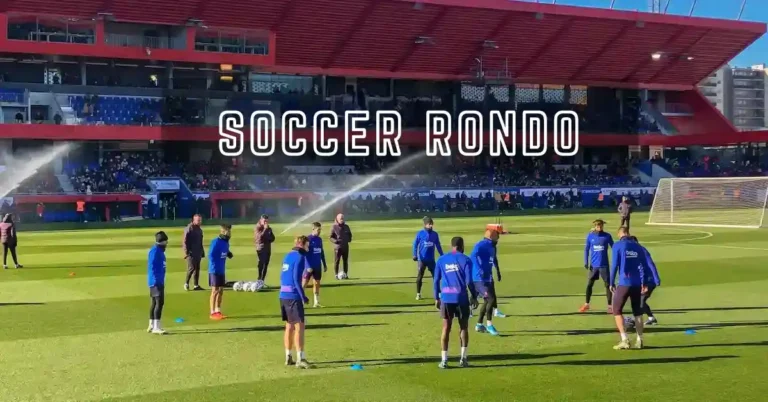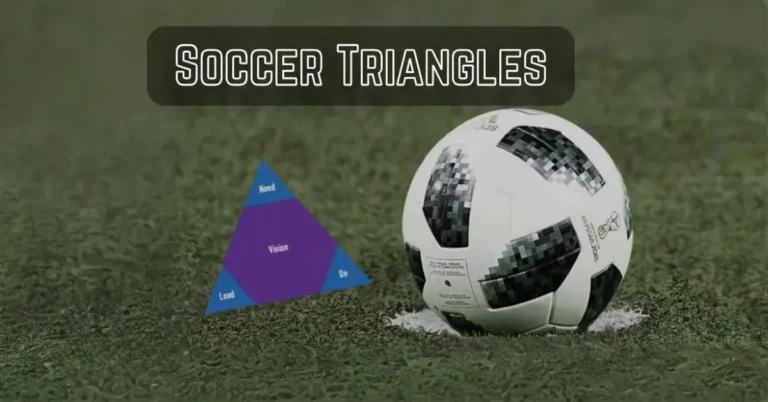6v6 soccer formations with their pros and cons
In soccer, there are various formats to accommodate various preferences and to motivate players to engage more. In recent years, the 6v6 soccer formations have gained considerable attention.
There are six players on each team in 6v6 soccer, which creates a more strategic and intimate gameplay environment. As a result of a smaller team size, individuals are more involved in the decision-making process and can react more quickly.
best 6v6 soccer formations
Here are the four best 6v6 soccer formations, you can choose the right formation for you. These formations will help you to play 6v6 soccer efficiently. Let’s discuss each formation separately.
The 2-2-1 formation
2-2-1 formation is included in popular 6v6 soccer formations and is also known as the “diamond” or “Christmas Tree,” and is characterized by its compact shape and flexibility. 2-2-1 has gained popularity in recent years.
The formation consists of two central defenders, two central midfielders, and a lone striker. The midfield is arranged in a diamond shape, with one player at the base and two players on either side.
This is considered the best formation in 6v6 soccer formations, due to its tactical arrangement.
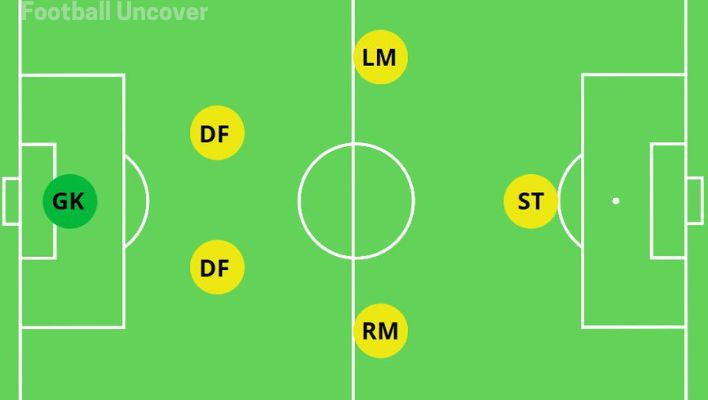
pros of 2-2-1 formation
Defensive Solidity:
The 2-2-1 formation provides a solid defensive foundation with two center-backs guarding the backline. This structure makes it challenging for the opposition to penetrate and create goal-scoring opportunities.
Compact Midfield:
The diamond-shaped midfield allows for a compact and organized presence in the center of the pitch. This can stifle the opponent’s ability to play through the middle, forcing them to go wide.
Counterattacking Potential:
With a lone striker up front, the 2-2-1 formation is well-suited for quick counterattacks. The team can absorb pressure defensively and transition rapidly to exploit open spaces when winning back possession.
Controlled Possession:
The presence of two central midfielders facilitates ball retention and controlled possession. Teams using the 2-2-1 formation can dictate the tempo of the game, patiently waiting for the right moment to launch attacks.
cons of 2-2-1 formation
Vulnerability on the Wings:
The narrow shape of the 2-2-1 formation leaves the flanks exposed, making it susceptible to attacks from wide areas. Skilled wingers and overlapping full-backs can exploit the space on the wings.
Midfield Overcrowding:
The diamond midfield, while providing compactness, may lead to overcrowding in central areas. This can make it easier for the opposition to press and congest the space, disrupting the team’s buildup play.
Dependency on Individual Performances:
Success in the 2-2-1 formation often relies on the individual performances of key players, especially the lone striker and central midfielder at the base of the diamond. If these players underperform, the team’s overall effectiveness may suffer.
the 2-1-2 Formation
The 2-1-2 formation included in best 6v6 soccer formations and is also known as the “box” formation, consists of two defenders, one central midfielder, and two forwards.
This configuration creates a box shape in the middle of the field, emphasizing a balanced approach to both offensive and defensive aspects of the game.
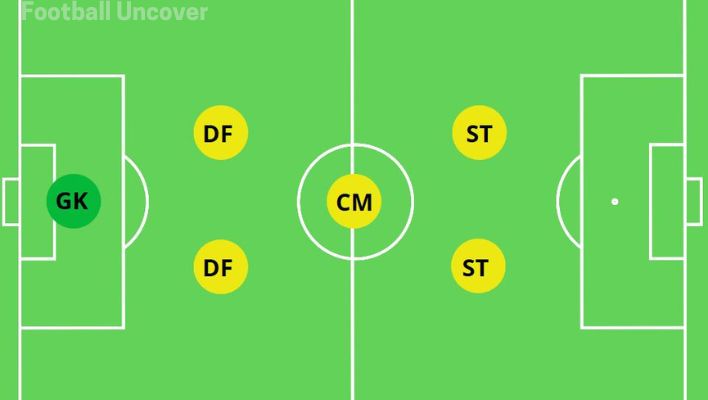
pros of 2-1-2 formation
Compact Defensive Structure:
The 2-1-2 formation provides a compact and solid defensive structure with two defenders at the back. This can make it challenging for opponents to break through the defensive lines and create goal-scoring opportunities.
Midfield Control:
With a dedicated central midfielder, the team can control the pace of the game from the center of the pitch. This player acts as a link between defense and attack, helping in both defensive transitions and offensive buildup.
Versatility in Attack:
The two forwards in the 2-1-2 formation offer versatility in attack. The team can choose to play with two strikers closely supporting each other or with one striker acting as a focal point and the other making runs into spaces.
Quick Transition from Defense to Attack:
The compact structure allows for a quick transition from defense to attack. The team can regain possession and rapidly initiate counterattacks through the central midfielder and forwards.
cons of 2-1-2 formation
Vulnerability in Wide Areas:
The narrow nature of the 2-1-2 formation makes it susceptible to attacks from wide areas. Skilled wingers and overlapping full-backs can exploit the spaces on the flanks, creating defensive challenges.
Limited Midfield Presence:
While the central midfielder is crucial for linking play, the 2-1-2 formation may struggle to dominate the midfield against formations with an additional central midfielder. This can lead to challenges in maintaining possession and controlling the center of the pitch.
Isolation of Defenders:
With only two defenders at the back, the team is vulnerable to being outnumbered if the opposition commits more players forward. This can result in situations where defenders are isolated and exposed to numerical superiority.
Dependency on Forward Pairing:
The success of the 2-1-2 formation often hinges on the understanding and effectiveness of the forward pairing. If the two forwards fail to coordinate well or lack synergy, the team’s attacking potency may be compromised.
See also 8v8 soccer formations
the 3-1-1 formation
The 3-1-1 formation is included in typical 6v6 soccer formations and is often referred to as the “sweeper” or “libero” formation, consisting of three defenders, one defensive midfielder, and one lone striker.
The defensive midfielder acts as a shield in front of the defense, while the lone striker shoulders the responsibility of spearheading the attack.
This configuration provides a solid foundation while allowing for flexibility in both defensive and offensive phases. The outside backs (LD and RD) also go towards midfield to help the midfielder and forward.
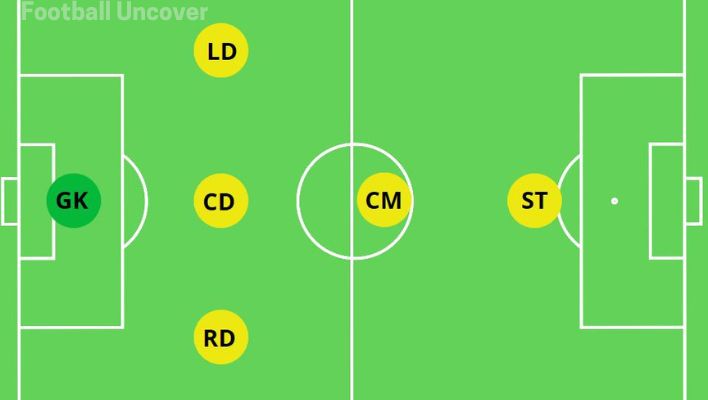
pros of 3-1-1 formation
Defensive Resilience:
The 3-1-1 formation excels in defensive solidity with three central defenders forming a robust backline. This defensive structure can effectively thwart opposition attacks, especially in central areas.
Midfield Stability:
The presence of a dedicated defensive midfielder in front of the defensive line adds stability to the midfield. This player acts as a link between defense and attack, providing support in both phases of play.
Versatile Attacking Options:
The lone striker in the 3-1-1 formation can be supported by the central midfield and overlapping wing-backs, creating versatile attacking options. This allows for a balanced approach, with the ability to exploit spaces centrally and on the wings.
Effective Ball Retention:
The configuration of players in the 3-1-1 formation allows for effective ball retention and controlled possession. The defensive midfielder and central defenders can circulate the ball, dictating the tempo of the game.
cons of 3-1-1 formation
Vulnerability to Wide Attacks:
The narrow nature of the defensive setup in the 3-1-1 formation can leave wide areas exposed. Skilled wingers and overlapping full-backs from the opposition may exploit the space on the flanks, posing a defensive challenge.
Isolation of the Lone Striker:
With only one striker up front, the lone forward may face isolation and limited support in the attacking third. This can make it challenging to sustain pressure and create goal-scoring opportunities.
Dependency on Defensive Midfielder:
The success of the 3-1-1 formation heavily relies on the performance of the defensive midfielder. If this player is not effective in breaking up opposition attacks and distributing the ball, the team may struggle to transition smoothly between defense and attack.
Limited Presence in Advanced Areas:
The formation’s emphasis on defensive stability may result in limited numbers in advanced areas during the attacking phases. This could restrict the team’s ability to overload the opposition in the final third.
the 1-3-1 formation
The 1-3-1 formation is included in rarely used 6v6 soccer formations and is also known as the “sweeper” formation, consisting of one central defender, three midfielders, and one lone striker.
The central defender acts as a sweeper, providing a last line of defense, while the midfield contributes both defensively and offensively.
This formation seeks to control the central areas of the pitch, dictating the pace of the game and creating opportunities for the lone striker upfront.
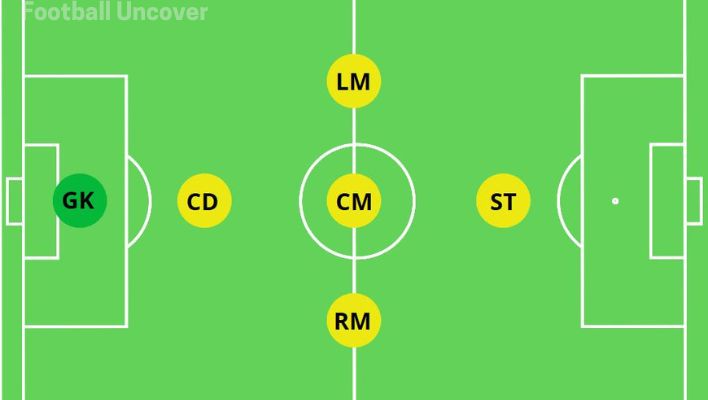
pros of 1-3-1 formation
Defensive Security:
The 1-3-1 formation offers a solid defensive foundation with a dedicated central defender. This player, often acting as a sweeper, can provide cover for the defensive line and intervene effectively to thwart opposition attacks.
Midfield Control:
With three midfielders, the formation allows for numerical superiority in the central areas. This can result in enhanced ball retention, control of possession, and the ability to dominate midfield battles.
Versatile Midfield Options:
The three midfielders in the 1-3-1 formation provide versatility in both defensive and offensive roles. This allows for fluid transitions, with players capable of supporting defensive efforts and contributing to attacking plays.
Effective Counterattacks:
The lone striker in the 1-3-1 formation, supported by a compact midfield, can be the focal point of quick counterattacks. The team can absorb pressure defensively and swiftly transition to exploit open spaces when regaining possession.
cons of 1-3-1 formation
Isolation of the Lone Striker:
The lone striker in the 1-3-1 formation may face isolation and limited support in the attacking third. This can make it challenging to sustain pressure and create goal-scoring opportunities, particularly against well-organized defenses.
Vulnerability on the Flanks:
The narrow structure of the formation may leave the flanks exposed, making it susceptible to attacks from skilled wingers and overlapping full-backs. This vulnerability can pose a defensive challenge, requiring effective coverage from the midfielders.
Dependency on Sweeper:
The success of the 1-3-1 formation heavily relies on the performance of the central defender acting as a sweeper. If this player fails to read the game effectively or struggles in one-on-one situations, the defensive integrity of the team may be compromised.
Limited Width in Attack:
The formation’s emphasis on central control may result in limited width during the attacking phases. This could make it easier for opponents to defend against, especially if they can compact the central areas and restrict the team’s options.
Best tips for 6v6 soccer
Here are some basic tips you should know. These tips will help you to play 6v6 soccer efficiently. These tips can be helpful for you in 7v7, and 9v9 soccer.
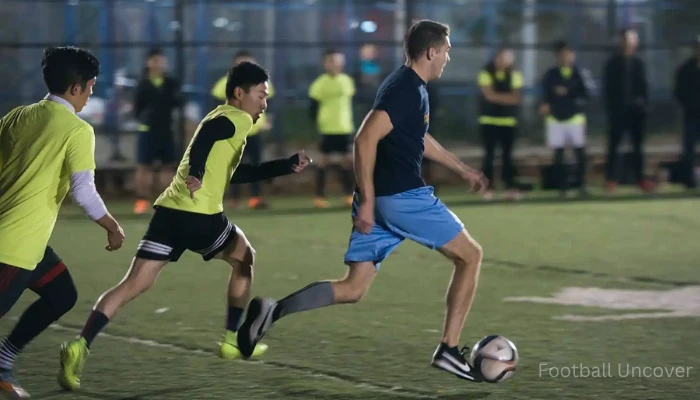
Quick Passing and Movement
Emphasize rapid ball circulation and player movement to exploit space efficiently in the smaller 6v6 setting.
Positional Awareness
Foster a strong sense of positional play, ensuring players understand their roles both offensively and defensively to maintain team structure.
Effective Communication
Encourage constant communication among teammates to coordinate movements, alert each other to opposition threats, and enhance overall team cohesion.
Utilize the Goalkeeper
Involve the goalkeeper in build-up play and transitions, utilizing their ability to initiate attacks and provide an additional passing option.
Defensive Compactness
Maintain a compact defensive shape to limit opponents’ space and force them into making mistakes, facilitating quicker transitions from defense to offense.
Quick Transitions
Train players to switch quickly between attacking and defensive phases, capitalizing on turnovers to catch opponents off guard during transitions.
Individual Skill Development
Encourage players to hone individual skills such as dribbling, close ball control, and quick decision-making to navigate the tighter spaces of the 6v6 format.
High Work Rate
Stress the importance of a high work rate from all players, as the smaller pitch requires constant movement and involvement in both attacking and defensive actions.
Strategic Substitutions
Use substitutions strategically to maintain intensity throughout the game, ensuring fresh legs contribute to sustained team performance.
Set Pieces and Dead-Ball Situations
Develop set-piece strategies, including corner kicks and free kicks, as these can be potent scoring opportunities in the confined 6v6 environment.
FAQs
Approximately 45-60 yards long and 35-45 yards wide is the size of the playing field in 6v6 soccer.
The 2-2-1 formation is the best formation for 6v6 soccer because of its balanced structure of offending and defending. The formation consists of two central defenders, two central midfielders, and a lone striker. The midfield is arranged in a diamond shape, with one player at the base and two players on either side.
In 6 vs 6 football, each team has six players on the field, including a goalkeeper. The game emphasizes teamwork, quick passes, and strategic positioning to create scoring opportunities in a smaller, more dynamic setting compared to traditional 11-a-side soccer.
6v6 soccer fields are typically 45-60 yards long and 35-45 yards wide.
Conclusion
6v6 soccer stands as a unique and dynamic format that offers players a unique soccer experience. From its small team size to its fast-paced gameplay, this format has created its own identity in the world of soccer. It is very necessary to select the best formation before starting the game. The above 4 were the best 6v6 soccer formations. You can choose the best formation for you by analyzing the opponents’ strategy.

